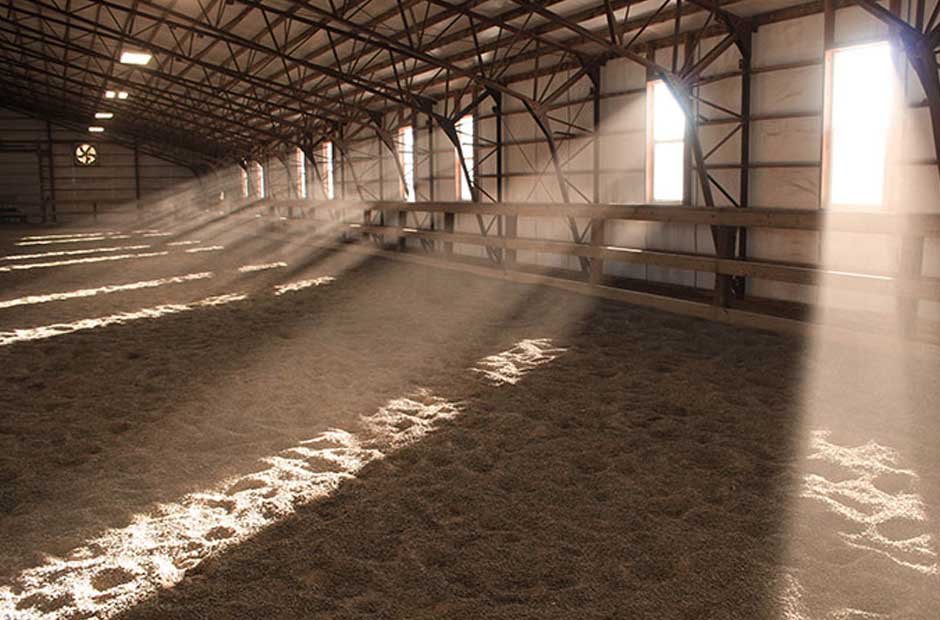Circulating air in barns is crucial to regulating temperature and keeping livestock comfortable. Airflow can be controlled by various techniques, from relying on wind and building openings for passive ventilation to active ventilation products, such as barn fans. Everything from the barn’s size to the roof’s design moves air through. Insufficient air flow is poorly designed and risks your animals’ health.
Improve airflow, turning a hot, musty barn into a cool, fresh environment. Reduce moisture and odours and eliminate pathogens and harmful gases like ammonia and carbon dioxide. Make it more comfortable for workers in barns. Most importantly, ensure your animals do not develop respiratory health problems.
Here is how to improve airflow in barns.
Passive ventilation and active ventilation
As you will discover below, there are some ways to improve airflow through passive and active ventilation. Passive ventilation is natural. They often modify the barn’s design to let the natural environment control airflow.
This doesn’t always get the job done. Many rely on active ventilation systems, like mechanical designs and barn fans.
Elevate the roof pitch
If you are designing a new barn or making modifications to the design of your existing barn, adding a roof pitch will allow moisture and gases to move up to the ridge vent if there is one located there. An ideal roof pitch is 4 feet vertically and 12 feet horizontally.
Install a ridge vent
A smart airflow design is a ridge vent one-foot wide minimum with an additional three inches for every ten feet of total barn structure width beyond 40 feet. It gives an opening from which warm air can flow out the top of the barn.
Create sidewall openings
Make 14-16 foot-high openings for large amounts of air to enter and exit. These large openings shouldn’t be locked and closed. Barn curtains should be raised to maximize airflow. Sidewall openings will create a natural cooling effect as stale air is quickly expelled.
Minimize direct sunlight
Most barns are oriented in an east/west direction, reducing sunlight exposure. Consider other ways to eliminate direct sunlight. This is, by far, the element most likely to heat the air inside your barn and, unfortunately, reduce airflow effectiveness.
Move barns away from each other
Barns should not be near. Barns must be 80 feet apart. The larger the barn, the more space you need; in some cases, this could be as far apart as 100 feet or more from each other.
Use barn curtains wisely
Barn curtains are installed on the side walls. They can be adjusted, however, and aren’t still. Airflow can be maximized depending on the season. Curtains should be raised in summer to increase airflow. Winter, they will fall.
However, a lack of airflow causes condensation, making the environment humid. For this reason, always have an open space at the top of the barn, opening one-half of the ridge opening width so air can flow.
Employ high-quality barn fans
Barn fans are a simple way to circulate natural air throughout all areas of the barn, instantly improving airflow when you need it most. Barn fans typically have a large size and slow. They are the most effective way to reduce moisture, heat, and odour when used correctly.
Nothing is quite as effective as barn fans, especially in large facilities where moisture, heat, and odour are constant issues and where natural ventilation isn’t effective enough.
Use cross-ventilation with air inlets
Cross-ventilation is a popular method farmers use to maximize barn potential. Cool air is forced into building air inlets. Meanwhile, warm air is funnelled out through whatever roof vents or windows you have. Inlets are a key element of many barns struggling with airflow and can help greatly.
Inlets can be designed to include all sorts of features, including interior ceiling baffles, wall louvres, a roof, or an open window. This renews the air inside the building.
Positive pressure ventilation with ductwork
Another way barn fans control airflow is positive pressure ventilation. This draws cool, fresh air from fans in the end walls and brings it to individual stalls through ducts. This is a highly effective way to reduce pathogens and respiratory illness in cattle.
Ductwork is typically easy to install and inexpensive. This is also more or less necessary when barn doors must stay open for livestock to enter/exit.
















